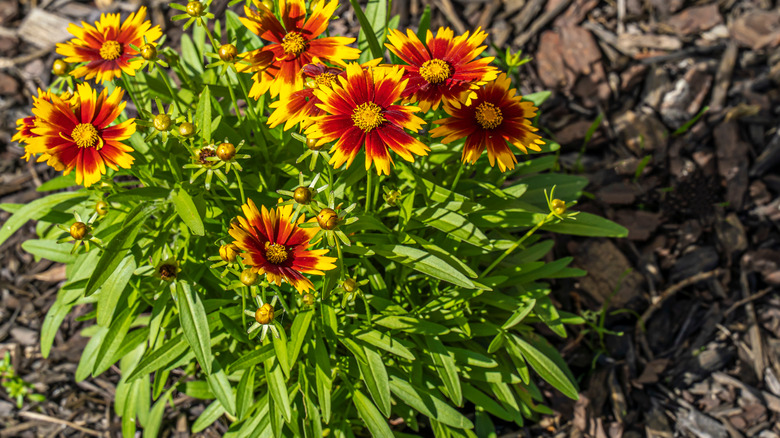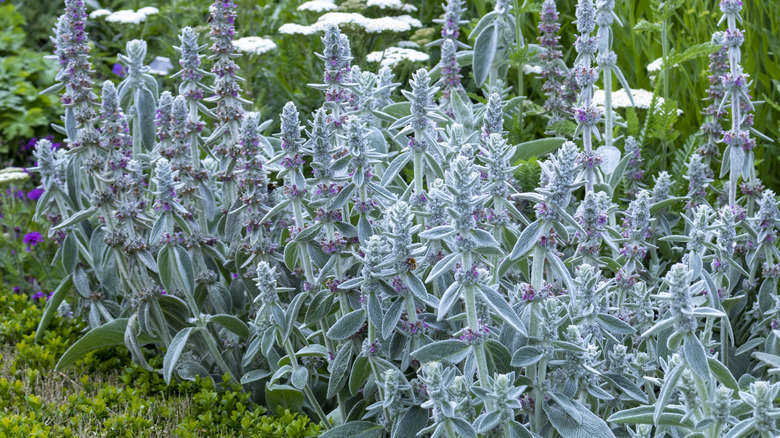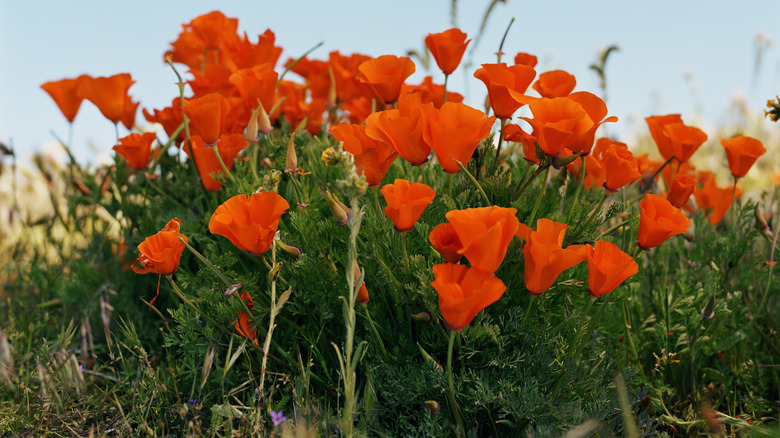Can’t seem to grow anything but dull weeds in your garden? Don’t assume you are alone. Many aspiring gardeners stumble upon the not-so-pleasant revelation that their plot is closer to a gravel-strewn driveway than the fertile plains of their dreams. But while poor soil in your garden could be as annoying as a stubborn gnat, it does not necessarily mean a tectonic shift in your green thumb ambitions. You’re closer to fostering your thriving greenscape than you might think.
Peel back the veil of gardening myths, and you’ll find that not all plants demand impeccable soil nutrition and five-star living conditions. On the contrary, a battalion of 24 resilient beauties daringly defies the odds, conquering the harshest soils with audacious vitality. And the cherry on top? These green warriors wear many hats — not just brightening your outdoors. It’s not unusual to spot edible variants like thyme, sage, or lavender among these low-maintenance heroes. Plus, many are irrefutable magnets for wondrous pollinators, fostering biodiversity right within your yard.
However, in your rush of excitement, planting these sturdy, low-maintenance marvels willy-nilly isn’t a wise gardening maneuver. Instead, you ought to ensure the selected green companions are suitable for their specific geographical location, premised on USDA hardiness zones. While some in this resilient group of plants have a tighter range of survivability, others like sunflowers showcase jaw-dropping latitude, flourishing across an impressive spectrum of over 8 zones.
1. Sunflower

Topping our compilation of beautiful plants that grow well in poor soil is the sunflower (Helianthus annuus). The towering golden giants from the Asteraceae family thrive in soils of any texture, can grow in shallow soil, and can tolerate some waterlogging. Hardy within zones 2 to 11, they can stretch upwards to a lofty 10 feet. The sunflower plant is something of a solar panel during summer, turning throughout the day to soak up any available sunshine. These flowers don’t fuss about space — sow them 6 inches apart and an inch deep along walls or fences, and you’ll have an army of tall stalks shouldering massive, stunning blooms.
2. Lavender
In our list of garden plants for poor soils, lavender (Lavandula) holds a special place, as its intoxicating scent wraps your landscape in a blanket of serenity. This plant needs well-draining soil but actually prefers a gravelly place instead of rich soil. It flourishes in hardiness zones 5 to 10, thirsting for full sun rather than shade. Perfectly suited along paths (where their delightful scent can be stumbled upon) or as a charming border plant, this rabbit-resistant treasure trove of essential oils will respond with a striking purple display when summer makes its annual return.
3. Moss rose
Fotolinchen/Getty Images
Moss rose (Portulaca grandiflora) offers a brilliant, colorful fiesta in one tiny package. Undeterred by low-nutrient soil, this succulent rolls out the carpet of colors with fleshy leaves and a trailing growth pattern. It loves full sun, exhibiting admirable resilience in zones 4 to 11 and in well-draining soil. In summer, the moss rose blossoms in all its glory, painting your landscape in shades including red, pink, yellow, magenta, lavender, purple, orange, and yellow. If intending to host this drought-resistant plant, scatter the seeds on the soil’s surface post-frost and follow up with a slight covering. Once mature, these plants can be stunning additions to containers.
4. Cosmos
Tohuwabohu 1976/Shutterstock
Fancy a pest-resistant annual flower that grows in poor soil? Cosmos (Cosmos bipinnatus) is a welcome choice. A showy member of the Asteraceae family, these plants reach up to 4 feet tall and are noticeable with feathery foliage and daisy-like blooms in various shades. Cosmos are unfazed by poor soil and diverse climates from zones 2 to 11. They seek nothing short of full sunlight to unleash their beauty. You can start these quick-growers inside trays a month before the last frost. Alternatively, sow the seeds directly outdoors once the frost retreats. Behind low-growing plants or along borders, the reasonably deer-resistant cosmos shoots up, breaking the monotonous single-level profile.
5. Yarrow
oroch/Shutterstock
Yarrow (Achillea millefolium) brings home the sturdy and wild ethos of the Asteraceae family. Their clustered flowers, accompanying feathery green foliage, come in a range of colors from yellows and whites to pinks and reds. But don’t let the modest looks deceive you. This perennial epitomizes resilience, hardly faltering in poor soils and between hardiness zones 4 to 8. However, it cherishes full exposure to the sun and well-draining, moist soil. When growing yarrow at home, ensure 2 to 3 feet of room between plants. Deer and rabbits don’t seem to fancy this tough character due to the bitter taste of the aromatic foliage.
6. Purple coneflower
Keri Delaney/Shutterstock
Purple coneflower (Echinacea purpurea), another plant that thrives in poor soils, drought, and humidity, isn’t apologetic about its striking looks. It showcases dramatic, downward-arching, purple-pink petals radiating from a spiky central cone, hence its well-deserved moniker. Towering up to 4 feet tall, these perennials thrive in USDA hardiness zones 3 to 8 and grace the garden with luscious blooms from June to August. Birds like goldfinches find purple coneflowers’ seeds tempting, while butterflies and other pollinators are drawn to the nectar. Furthermore, these hardy plants carry medicinal potential and are perfect for planting at the back of mixed borders or flower beds.
7. Thyme
Julitt/Shutterstock
Hailing from the aromatic Lamiaceae family, thyme (Thymus) is a garden treasure that can survive in lots of types of soil, as long as it’s well-draining. Not merely a culinary staple, this plant for sandy soil also boasts of tiny yet endearing lavender flowers nestled amid thin stalks and fragrant leaves. This sun-loving ground cover adds charm to rock gardens, paths, or borders, flourishing in USDA hardiness zones 4 to 8. Its flowers are a favorite for bees in summer, with the leaves accentuating the distinctive earthy aroma when touched or crushed. Drought-tolerant, thyme is perfect for low-maintenance areas, rock gardens, hanging baskets, or even in your container garden.
8. Lanceleaf coreopsis

Timothy L Barnes/Shutterstock
Imagine a canvas painted with daubs of sunny yellow or golden shades — that’s the inviting world of lanceleaf coreopsis (Coreopsis lanceolata) from the Asteraceae family. The daisy-like flowers conceal at their heart a deeper-toned core, altogether beckoning pollinators, birds, and human observers alike. Basking under the full heat of the sun, lanceleaf coreopsis is well adapted from zones 4 to 9, blooming from May to July. Coreopsis plants are versatile and can thrive in many soil conditions. The drought-resistant and deer-resistant flowers can be used as border plants, rock or wildflower garden additions, or planted en masse in a prairie-like setting.
9. Lamb’s ear

Irina Stevenson/Getty Images
Next in line, we revel in the plush elegance of lamb’s ear (Stachys byzantina). Its enchantingly soft, silvery-gray foliage creates a soft texture contrast across your garden’s visual landscape. Lamb’s ear flourishes in zones 4 to 8, fairing comfortably in full sun to partial shade and well-draining soil. It’s a sight to behold when it produces purple flowers on tall spikes — a delightful surprise in late spring to early summer. Thanks to lamb’s ear’s fondness for dry, poor, or rocky soil, you can deploy it as a border accent, let it star as your groundcover, incorporate it in rock gardens, or pair it with sage or roses.
10. Two-row stonecrop

Yulia_B/Shutterstock
When it comes to the two-row stonecrop (Sedum spurium), imagine an array of thick, fleshy leaves forming rosettes or carpeting ground, introducing a play of fascinating shapes. These hardy succulents, adapted from USDA zones 3 to 9, enjoy full sun to part shade and put up a fabulous fall show when tiny, five-petaled, star-shaped flowers cluster together on stems. With the color of blossoms ranging from white to pink to red to yellow depending on the species, they are versatile performers, whether as a pollinator ground cover, border plant, or container addition. Their tolerance to drought and dry or rocky soil make them a reliable, close-to-no-maintenance choice for gardeners.
11. Sage

Yuliia Bilousova/Getty Images
A much-loved member of the Lamiaceae family, sage (Salvia officinalis) forms an evergreen, compact mound accentuated by its oval, gray-green leaves with a downy texture. Through mid to late summer, sage delights its surroundings with tubular, purple-blue, camphor-scented flowers that are a feast for the eyes and a haven for pollinating insects. This hardy perennial easily adapts to harsh soil conditions in zones 4 to 10, thriving under full sun. It can survive in dry soils and doesn’t need lots of fertilizer to grow but does need good drainage. You can plant it along herb or vegetable garden borders, in mixed perennial beds, or alongside companion herbs for sage.
12. Blanketflower

Maycal/Getty Images
Turning our attention to the blanketflower (Gaillardia pulchella), this sun-loving, summer-blooming perennial comes from the Asteraceae family. It boasts relatively-massive flowers in bold shades of red, yellow, and orange that tirelessly entertain pollinating guests like bees and butterflies. The unique petals form a two-toned enchanting display, with the ends dipped in yellow, while the centers channel a rich, warm red. Surviving in poor soils and drought but requiring well-draining soil, it conquers hardiness zones 3 to 11, braving full sun exposure and being unbothered by rabbits and deer. You can nurture this flower for poor soils in containers, along driveways or walkways, or as a star in gardens.
13. Rosemary

HannaTor/Shutterstock
Next up is rosemary (Rosmarinus officinalis), a therapeutic evergreen shrub that can grow in poor soil, as long as it’s well-draining. This mint family member has needle-like leaves showcasing a silvery sheen on their underside. A memorable delight emerges in spring and summer when the shrub erupts into delicate whorls of small pink, white, or blue flowers. The Mediterranean herb unveils its sensory magic in sun-soaked hardiness zones 7 to 10, where it inspires beautiful garden designs via container gardening and can benefit from being edged along walkways or pathways. Plus, by stationing it near outdoor entertaining or seating areas, you can enjoy its aromatic prowess up close.
14. California poppy

Siri Stafford/Getty Images
The vibrant California poppy (Eschscholzia californica) is a showstopper in the spring and summer. With roots in the Papaveraceae family, this flower unfurls soft, paper-like petals that shape into sensual sculptures of color, including garnet reds, scarlet oranges, pretty pinks, and creamy yellows. Resting on erect stems is foliage offering a delicate backdrop adorned with lobed, blue-green leaves. These drought-adapted color havens happily inhabit hardiness zones 5 to 10 and, contrary to their royal appeal, relish the full sun and impoverished but well-draining and sandy soils. Seed propagation is the way to go for California poppy, with strategic pruning to coax flowering.
15. Agave Americana

rmu2867 / YouTube
Be enthralled by the magnificent agave Americana, a formidable specimen also known as the century plant, agave cactus, or American aloe. Commanding attention as a member of the Asparagaceae family, it flaunts giant rosettes of thick, fleshy, arching, and deeply-lined leaves with terminal spines, complete with a towering, flowering stem. Agave Americana exhibits contrast in blue-gray to gray-green shades and is born to star in hardiness zones 8 to 10 under full sun. They proudly wear their drought-resistant badge and can be incorporated as focal points in containers or water-scarce and poorly-fertilized gardens. Sowing seeds or planting vegetative offsets is the way to go for agave Americana propagation.
16. Verbena

topimages/Shutterstock
For homeowners on the hunt for an annual flower that grows in poor soil and tolerates heat, verbena (Verbena officinalis) fits the bill. Boasting stalks that sway gracefully under the weight of butterfly-attracting, petite purple to red clusters, these plants paint a mesmerizing picture. Verbena provides you with the versatility to either sow seeds or transplant seedlings. A headstart of two to three months before the last frost is advisable when starting seeds indoors. On the other hand, verbena transplants beckon generous elbow room to flourish, ideally 2 feet apart. Deadheading is essential to avert overgrowth from seeds and ensure the botanical balance in your garden remains unspoiled.
17. Nasturtium

SANLYN/Shutterstock
Nasturtiums (Tropaeolum majus) are the perfect marriage of beauty and versatility, as they tolerate poor soil, but it needs to be well-draining. Picture their round leaves and petals awash with radiant hues of orange, yellow, white, pink, or red. These colorful plants are not just a visual feast; they also add a peppery punch to your culinary delights. They’re ideal for sun-dappled patches in hardiness zones 9 through 11. Envisage them blazing over rock walls, weaving their tapestry on trellises, carpeting the earth, or gracing your roses and daylilies. The nasturtium accommodates indoor starting (1 to 1.5 months before your last frost date) or direct outdoor sowing (late spring).
18. Chamomile

BestPhotoStudio/Shutterstock
Seeking a low-maintenance alternative to grass that will triumph over impoverished soils? Chamomile (Chamomilla recutita) has you covered. No doubt, you’ll delight in the subtle charm of this plant as it unfurls into fine plumes of feathery greens cradling daisy-like blooms. Best suited for USDA zones 4 through 9, these summer-blooming plants come in two primary varieties: Roman chamomile and German chamomile. Use them to establish a quilted lawn in spring or to engulf borders of low rock walls. And let’s not overlook the added utility — imagine savoring a cup of calming tea conjured from chamomile’s blooms. Bear in mind that late-summer deadheading is essential to temper enthusiastic growth.
19. Butterfly milkweed

Michael G McKinne/Shutterstock
Butterfly milkweed (Asclepias tuberosa) is a hardy, deciduous perennial that mesmerizes with flower clusters of oranges and reds from spring to fall. Does it surprise you that monarch butterflies are drawn to this botanical powerhouse? Drought-resistant and tailor-made for sun-drenched areas from hardiness zones 3 through 9, these marvels require well-draining soil, but they don’t require fertilizer. However, butterfly milkweed has a deep and chunky tap root, making it tough to transplant or divide. Your best bet? Start the plant from seed and be patient when waiting for blooms, which can take two to three years to appear. Further, while it’s deer-resistant, keep your eyes peeled for aphids.
20. Periwinkle

Kabar/Shutterstock
Next, meet the ground-cover maestro: periwinkle (Catharanthus). It excels in weaving a verdant carpet across gardens in hardiness zones 4 through 9 and in any well-draining soil type. Beneath the canopy of towering trees, periwinkle becomes the caretaker of shade, shielding the soil from erosion with its sea of oval, glossy leaves. Otherwise, picture its foliage caressing the feet of its taller, heftier plants or spilling out of window boxes. From spring to summer, this plant produces star-shaped blooms in shades of blue and lavender. Envisioning this invasive, deer-resistant winder in your backyard? Well, its recommended propagation method is division or stem cuttings kept 12 to 18 inches apart.
21. Aster

Michael G McKinne/Shutterstock
Asters (Aster amellus) are hardy perennials from the Asteraceae family that can tolerate poor soil and drought and that thrive in full sunlight to partial shade. Remarkably, they find comfort in hardiness zones ranging from 3 to 8 and offer dazzling flower shows from the late summer straight through early fall. Whether you imagine an arrangement of asters along borders or encourage their growth in a more uninhibited, wildlife-friendly garden setting, their charm will make them an instant favorite. Consider planting divisions or sowing seeds directly in the garden in early spring or initiating them from seeds roughly 2 months before the frost retreats.
22. Pot marigold

Emer1940/Getty Images
Moving on, we meet the radiant and versatile pot marigold (Calendula officinalis), a plant that loves poorly-fertilized and free-draining soil. This captivating star of the Asteraceae family unfurls vibrant orange to yellow flower heads — colorful sun-kissed beauties that brighten any garden. Cherishing full to partial sunlight exposure, pot marigold offers impressive flowering in different seasons (from warm to cool). But beyond the looks, this non-toxic marvel is a go-to companion for culinary and medicinal applications. To grow this flower, sow the seeds ¼-inch deep in spring after the last frost. After germination, thin the seedlings, leaving 8 to 12 inches of space for each to blossom.
23. Black-eyed Susan

weha/Shutterstock
Radiating beauty even in poor but well-draining soils (albeit with frequent hydration), black-eyed Susans (Rudbeckia hirta) are the quintessential golden girls of your garden, stretching up to 3 feet tall. Their fiery yellow-to-orange flowers, seemingly “sparked” by a brownish-black center (core), mirror the sun’s brilliance. A favorite pit stop for butterflies, these plants are guaranteed performers in zones 4 to 9 and flaunt their blooms from mid-summer to mid-fall. Germinate the seeds indoors roughly two months before your region’s final frost or cast them directly into the garden a couple of weeks before the last frost. Alternatively, divide these mature plants at the onset of spring.
24. Treasure flower

Maksims Grigorjevs/Getty Images
Drawing the curtain on our compilation of poor soil-tolerant plants, we stumble upon the treasure flower (Gazania rigens), part of the Asteraceae family. This stunning perennial, which thrives in sandy soil and tolerates drought, hails from South Africa’s sun-drenched expanses, a lineage reflected in the colorful flowers. Count on them to lend their passionate spirit to gardens in hardiness zones 8 to 11. In addition, their exuberant floral display is remarkably versatile — it remains resolute amid both the scorching summer and the softer embrace of spring. As for incorporating them in your garden design, let them command center stage in rock gardens or create a lively ground cover.


